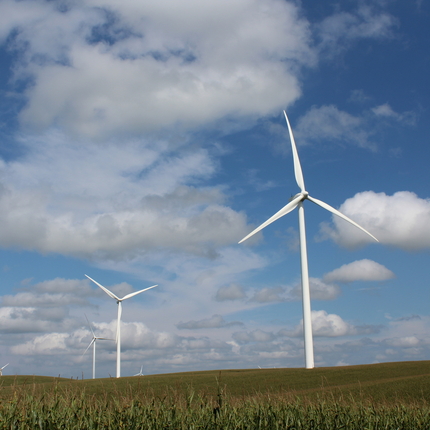Cora Hoffer, policy associate, [email protected], 507.513.8545; [email protected]
New Center for Rural Affairs resource outlines decommissioning options
LYONS, NEBRASKA – Advances in technology and lower installation costs continue to contribute to the growth of wind electricity generation in the U.S., especially in rural areas.
According to a report from the U.S. Department of Energy and Lawrence Berkeley National Laboratory, the cost of installing wind turbines has fallen more than 40% since its peak in 2010. In 2022, wind energy provided 10% of total electricity nationwide. In Iowa, more than 60% of power comes from wind energy systems. Wind energy generates more than 40% of the power in South Dakota, Kansas, and Oklahoma.
“Wind energy development continues to bring numerous benefits to nearby communities, such as increased tax revenue, new job opportunities, and lease payments to landowners,” said Cora Hoffer, policy associate with the Center for Rural Affairs. “Wind energy also provides a low-cost, reliable energy source for residents and businesses and makes a positive economic contribution by offsetting energy costs.”
However, Hoffer said the increase in development raises questions about what happens to wind turbines when they reach the end of their operational lifespan.
The Center's new “Decommissioning Wind Energy Systems Resource Guide,” written by Hoffer, outlines several management options to assist county officials, wind developers, and project owners working with the public and local government on a wind project.
Hoffer said there are several ways to address wind energy systems that have reached their operational lifespan, which is estimated between 25 and 40 years, and those no longer in active operation.
“Owners and developers may choose to fully decommission the project—which includes repurposing material, recycling, and disposing of wind turbines—or repowering the system to extend its life,” Hoffer said. “While relatively few systems are decommissioned each year, state and county governing bodies should set decommissioning standards during the planning process. Landowners and developers may consider establishing additional requirements.”
To read and download a copy of the Center’s Decommissioning Wind Energy Systems Resource Guide,” visit cfra.org/decommissioning-wind-energy-systems.



